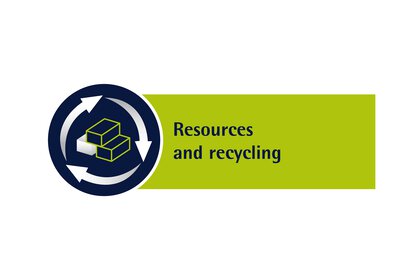Circular economy in construction: saving resources with recycling
The construction industry is confronted with resource shortages, material bottlenecks and supply chain problems. For ecological and economic reasons, there is an urgent need to rethink and develop an improved circular economy in the construction sector. New ways of thinking serve as a solution approach for significantly improving the energy balance of the construction industry. BAU 2023 will show which advantages a modern circular economy offers and which developments are currently being discussed in the field of recycling.
What does the circular economy mean in the construction industry?
As the topic of the hour, sustainability is occupying the entire construction industry. There is an ever-increasing pressure to opt for sustainable alternatives. A paradigm shift is needed: away from the linear economy to the circular economy. After all, the construction industry consumes more resources and produces more waste than any other industrial sector: it is responsible for 40 percent of all CO2 emissions and a third of the waste generated in Europe.
A closed-loop circular economy in construction focuses on the continuous reuse of products and raw materials. The main goals are to save resources and reduce waste as much as possible. This is because primary building materials are becoming increasingly scarce. Recycling of building materials is an important factor here: The guiding principle is called cradle-to-cradle and means "from the cradle to the cradle". In this never-ending cycle, 100 percent of all raw materials and materials go back into the biological and technical raw material cycle after use and are reused. To conserve natural resources and strengthen the circular economy in construction, substitute building materials are also needed.
Saving resources by recycling building materials
To counteract the shortage of raw materials and building materials, new regulations are already on the way. According to the European Construction Products Regulation, recyclable and recycled materials should be used more frequently than conventional building materials. Although the potential for recyclates is recognized, recycling of construction materials is still used too rarely. One example: construction plastic pipes, only seven percent of which are used as recycled products. The potential for recyclates is great, as confirmed by a study commissioned by the Federal Environment Agency. This has already drawn up standards and specifications for recycling construction materials, paving the way for a circular economy in the construction industry.
Saving resources with circular economy and urban mining
However, the recycling potential of classic building materials such as concrete, wood, gypsum, bricks, glass, sand, metal and plastic has not yet been fully explored. The construction industry faces a major challenge here - not least because building materials first have to be separated before they can be recycled. The urban mining principle, which follows the basic idea of a circular economy in which the value chains are thought of as economically and ecologically sustainable and efficient as possible, is helpful here.
Urban mining takes the approach that cities are valuable stores of materials that need to be safeguarded. Separation must be considered here from the outset. The guiding idea is to use these already existing secondary raw materials - one example is construction waste - further, in a new way or in a different way. Currently, only about 20 percent of recycled mineral building materials are used as aggregates in asphalt and concrete production. The majority ends up in road construction and earthworks, but not in building construction.
An outlook: In the long term, not only recyclable but also renewable raw materials such as wood, bamboo, flax, clay or hemp will replace conventional building materials in some areas, insofar as the material properties permit.
As part of a sustainable circular economy in construction, in the sense of the circular economy, urban mining pursues the same goals: Saving resources, improving energy balance, producing less waste, and minimizing raw material dependence.
Reduce, Reuse, Recycle through deconstruction
Another approach is sustainable deconstruction. It ensures that buildings are returned to the energy and material cycle without causing damage. This waste reduction strategy involves three main points:
- Reduce—reduce waste volume: this can be implemented with energy-efficient operation. To reduce heating costs, it makes sense to use the thermal mass of the structures. Design strategies help optimize the shape and orientation of structures to optimize cross-ventilation, for example. Greening structures, sensible glazing, or thinking about solar shading are other aspects.
- Reuse—Reusing or reusing building materials and saving resources: This promotes a sustainable circular economy in construction. On the one hand, building materials and components are recycled. On the other hand, old buildings can be given new functions with refurbishment and insulation.
- Recycle—define further utilization: Recycling of building materials and other construction materials helps to reduce waste. The challenge here, is to bring recycled concrete mixes up to the quality of new products in terms of performance.

